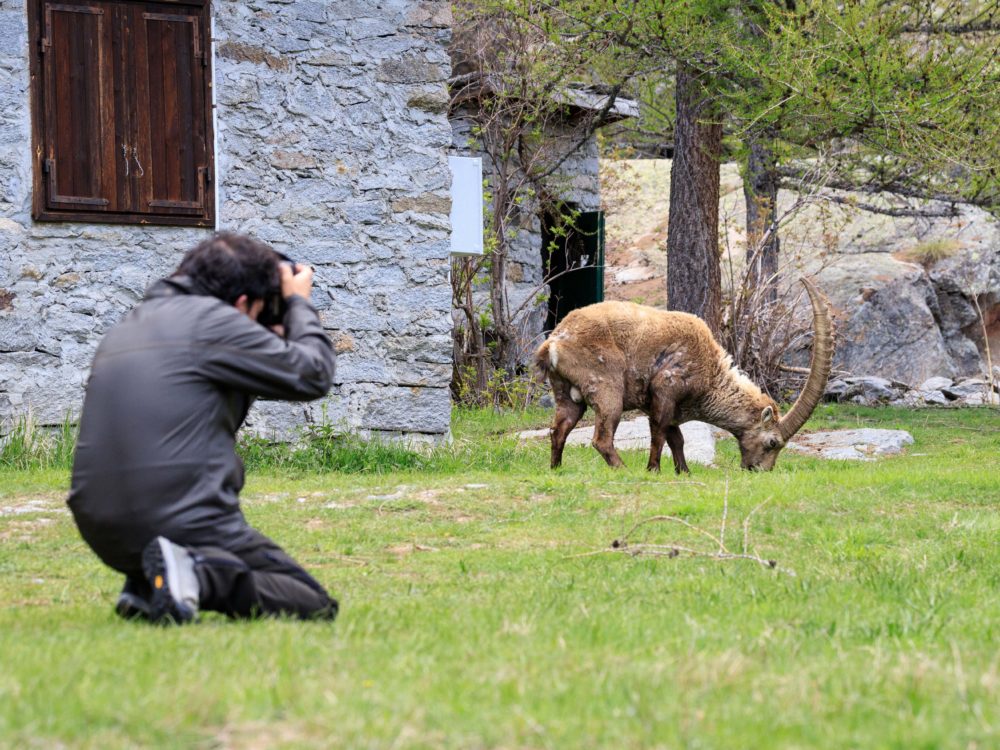
Have you ever admired famous wildlife photography in a book or magazine? Do you dream of learning how to take stunning images of wild animals in the great outdoors? If so, learning essential wildlife tips can help you make your visions a reality:
6 Photography Tips for Every Wildlife Photographer
- Choose the Right Wildlife Photography Gear
- Learn About the Animal You Want to Photograph First
- Understand the Rules of Good Composition
- Use the Best Lighting
- Try to Shoot at Subject’s Eye Level
- Be Patient and Enjoy the Moment
Digital camera technology has made wildlife photography more accessible than ever. Whether you want to shoot pictures of animals in the woods near your house or go on safari to visit Africa, wildlife photography is within your reach. You can learn for fun—or look towards setting up an online store to sell wildlife photography prints. Start with basic concepts and grow from there.
Many people wonder how they can learn more about wildlife photography. You can attend photography schools, find photography classes online, or check out wildlife photography books from your local library. Once you learn the essential concepts, you’ll find that mastering certain wildlife photography techniques can help you achieve success.
1. Choose the Right Wildlife Photography Gear
When you first explore wildlife photography, you want to make smart investments in the right gear. Top-of-the-line wildlife photography equipment can be expensive, but you can set a budget and stick to it. Here are the essential items you need.
Camera
A common first question is “what is the best camera for wildlife photography?” Many professional wildlife photographers recommend DSLR cameras. These cameras feature high-quality autofocus, accommodate a wide selection of lenses, and produce exceptional images. As an added benefit, they are also quite easy to use.
If you are looking for the best affordable camera for wildlife photography, you can choose from several well-known brands. For an inexpensive model, the best Canon camera for wildlife is the Canon EOS Rebel T5i. The EOS Rebel 60D is another solid choice. If you prefer Nikon, wildlife photography is accessible on a budget with the brand’s D3300 or D5300 models. Any of these cameras can help you master the basics of digital wildlife technology without a huge investment.
You can also consider using a camera trap. These devices use infrared sensors or motion sensors and snap photographs when they identify movement. Most often, these types of devices are used for research or wildlife conservation photography. Camera traps allow photographers or researchers to capture images without human interference. They can be a great asset for night wildlife photography. While not necessary for most wildlife photographers, camera traps can be essential when pursuing certain special interests.
Lenses
After investing in one of the best cameras for wildlife photography, you’re going to want to choose high-caliber lenses as well. Since it can be hard to get close to many animals, a long telephoto lens is always a good choice. Often, professional photographers use 500mm or 600mm wildlife photography lenses, but some prefer 800mm lenses.
Keep in mind that you may want to take a mix of close-up and wide shots. Close shots using long lenses can help you capture details about the animal. With a wide shot, you can frame the animal in context and share more information about their environment. Let your subject and the story you want to tell be your guide.
If you’re on a budget and looking for the best lens for wildlife photography Nikon and Canon both offer solid options with 70-300mm zoom. These won’t let you shoot as close as the long lenses preferred by professionals, but they are a great place to start.
Tripod or Monopod
With a tripod or monopod, you can stabilize your wildlife photography camera and take better photos. This is not a must-have item since you can work with the stabilization features of your camera or lens. If you do opt for a tripod or monopod, choose one that is durable so that it can withstand rugged natural environments.
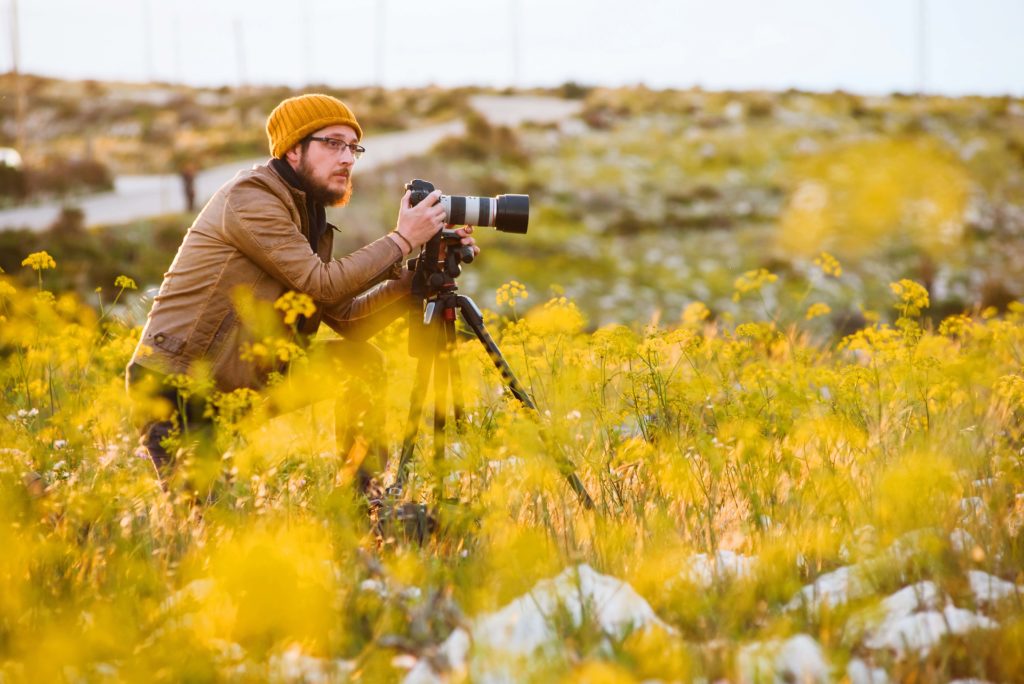
Other Wildlife Photography Accessories
Set aside some funds for a bag to carry your wildlife photography gear. This doesn’t need to be a big-ticket budget item, but it should be sturdy and protect your delicate equipment. It’s also a good idea to carry extra memory cards and batteries with you into the field, along with a lens cleaning kit. This is true whether you’re staying local and focusing on bird photography or pursuing wildlife conservation photography in a remote locale.
2. Learn About the Animal You Want to Photograph First
Every professional wildlife photographer understands the importance of doing homework before heading out to pursue animal photography. You can be a master of expert photography techniques, but your wildlife photos can lack appeal if you don’t know your subject.
Why is this one of the most important wildlife photography tips? Remember that every animal species is unique. Each has different behavior patterns and can display different personalities. If you understand your subject’s behavioral tendencies, you can be better prepared to capture those fleeting moments that make great wildlife pictures. No animal is predictable all the time, but by having some knowledge about common traits of the species, you will have a better chance of achieving that perfect shot.
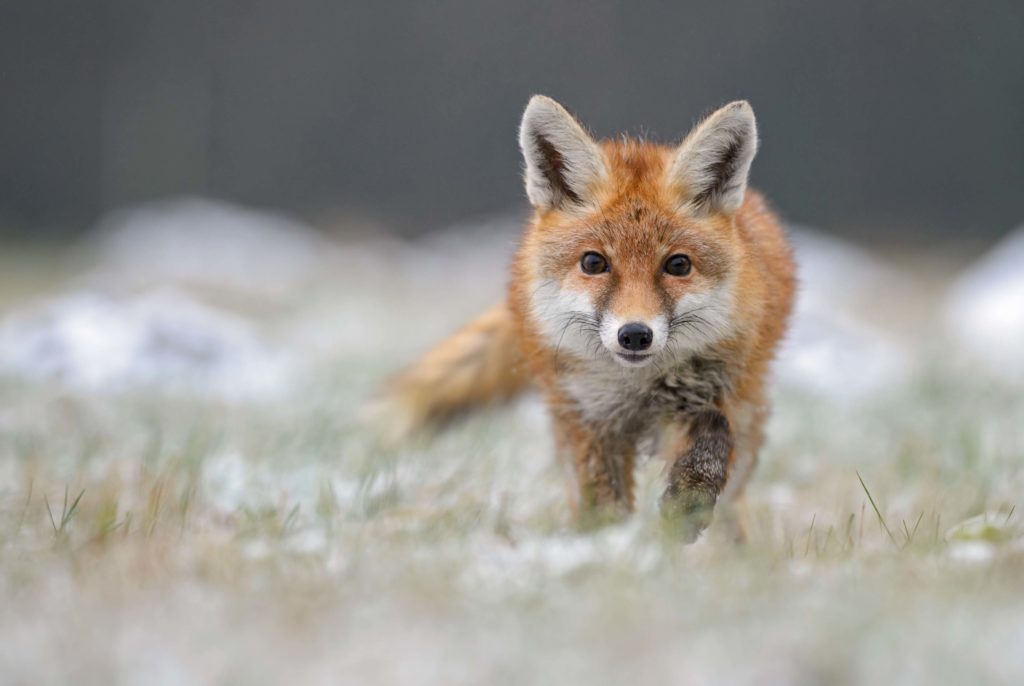
3. Understand the Rules of Good Composition
You may have purchased one of the best wildlife photography cameras, but your images can be lacking if you don’t understand the basics of composition. There are several key techniques you can apply when composing your shot, such as using the rule of thirds or golden ratio. Also, you can use framing, leading lines, or other principles to create depth in your image.
Remember, however, that animals can move quickly and unexpectedly. While you should have a good foundation in composition, it’s fine to break the rules. You won’t have much opportunity to set up a precise shot, but always be ready to capture amazing moments when they happen. Knowing composition techniques, while being flexible and spontaneous, are essential skills for wildlife photographers.
If you capture a great photo but need to enhance colors or alter lighting, you can always rely on Lightroom presets, such as the Photonify Animal Collection. When you are new to wildlife photography, you can focus on shooting a solid photo and working out the nuances of the presentation during post-processing.
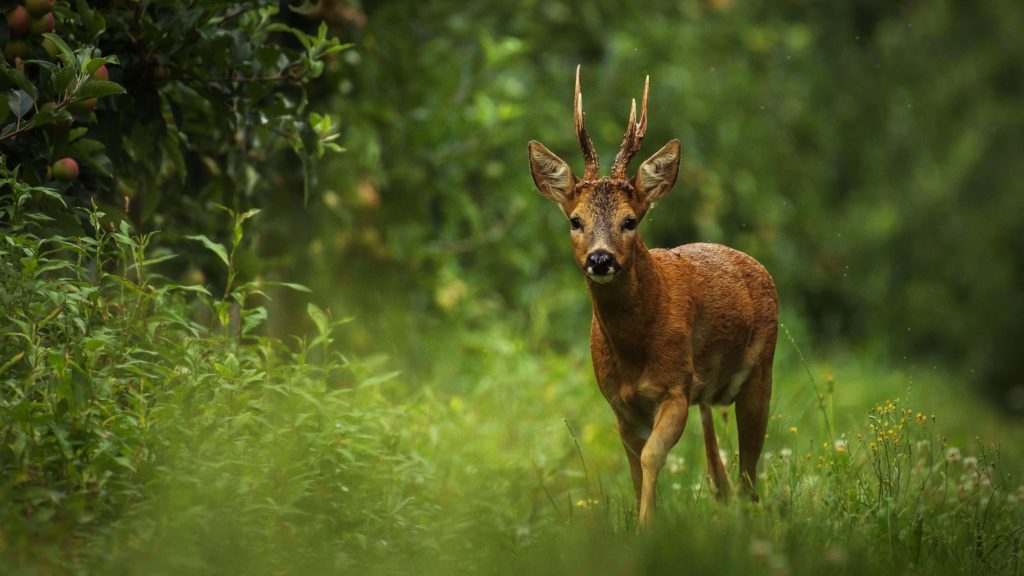
4. Use the Best Lighting
What is the best time for wildlife photography? Since you’ll be taking wildlife pictures outdoors, you’ll be relying on natural light for your images. For that reason, many photographers recommend shooting wildlife photography at the golden hour—or the first hour after dawn or last hour before the sun sets. Remember that the golden hour varies by time of year and location, so always check for the precise sunset and sunrise times in your location.
You may have to set an alarm and head out early to capture a great animal photo. Or you may have to work quickly to take advantage of the last moments of fading light. Another good option for wildlife photography can be shooting on overcast days. In these scenarios, the clouds help filter the harsh light of the sun and can help create soft, even light.
If your lighting conditions are less than ideal, you can work magic in post-processing. You can use the best photo editing apps to adjust the lighting and take your favorite wildlife photo from good to great in minutes.
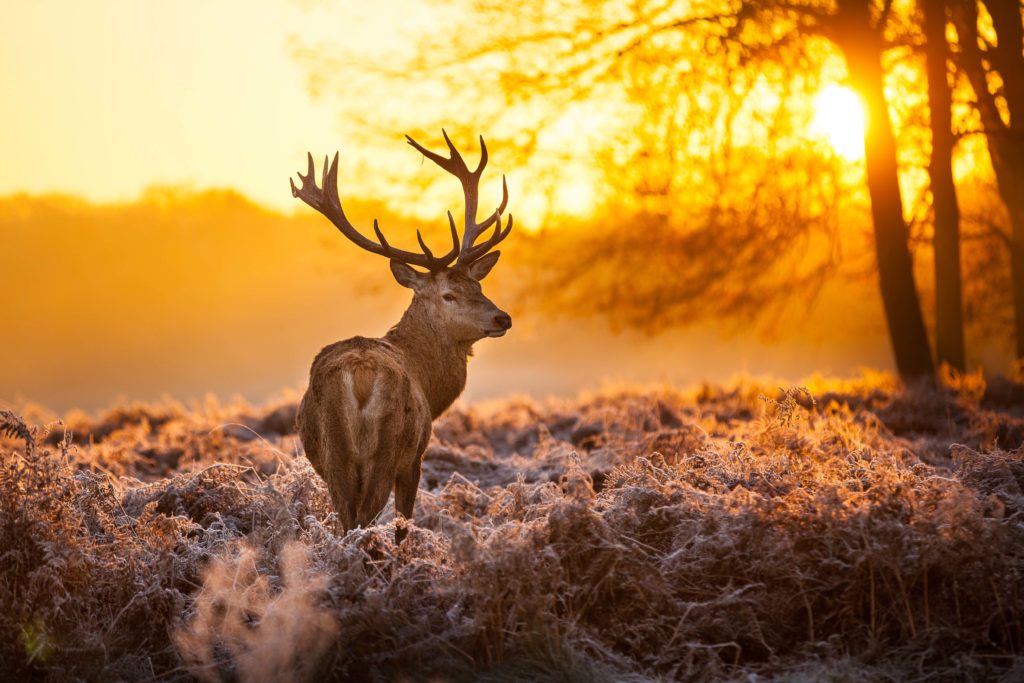
5. Try to Shoot at Subject’s Eye Level
Have you ever seen a wildlife photo of a subject that appears to be making eye contact with the photographer? Those amazing shots can truly bring out the depth and personality of the animal subject. To replicate that look, you should try to get an eye-level perspective when possible. Of course, this can be difficult for very tall animals or for birds—but it’s a good choice for many types of animal photography.
You can also achieve great effects by positioning yourself lower than your subject and shooting upwards. This can help you create an interesting perspective or possibly capture intriguing activity when you press the shutter. Sometimes, the best shots are when the animals are engaging in natural behavior instead of looking directly at the camera.
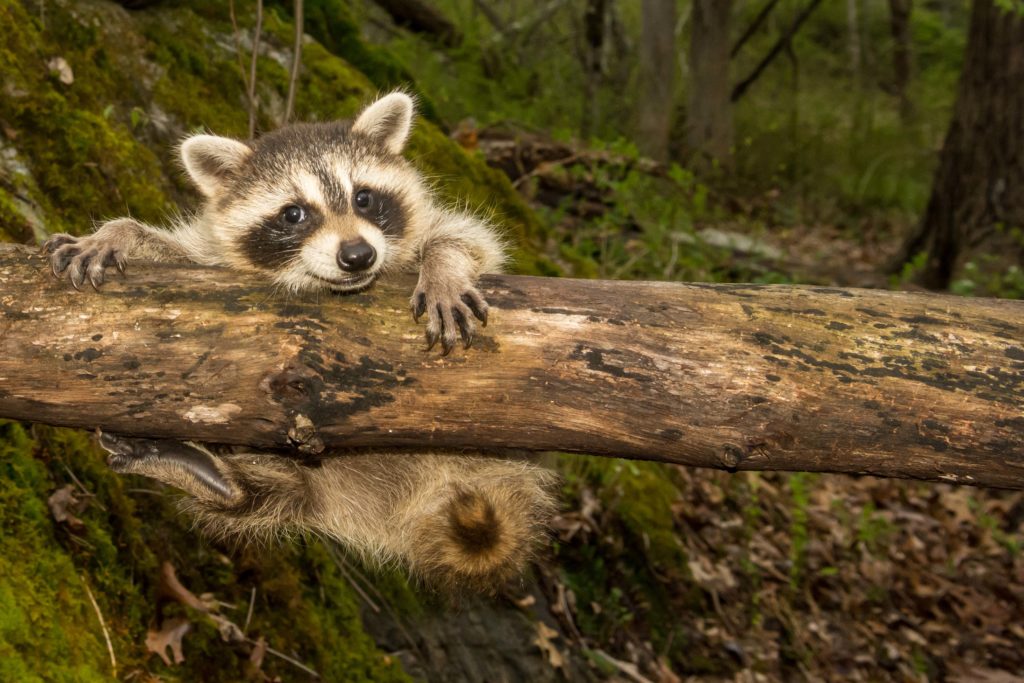
6. Be Patient and Enjoy the Moment
You can learn a lot of techniques in a photography course, but there’s one skill that can’t be taught: patience. A wild animal likely isn’t going to show up the moment you walk out into its environment. And you’ll never convince it to pose for you. Instead, you must be willing to take your time, stay patient and alert, and wait for the perfect photographic moments to arise. This is one of the key wildlife photography tips every photographer needs to know.
When you are quiet and observant, an animal is more likely to move into your field of view. You may even find groups of animals arrive. This can give you the opportunity to photograph unique behaviors, such as competition for resources or caring for young.
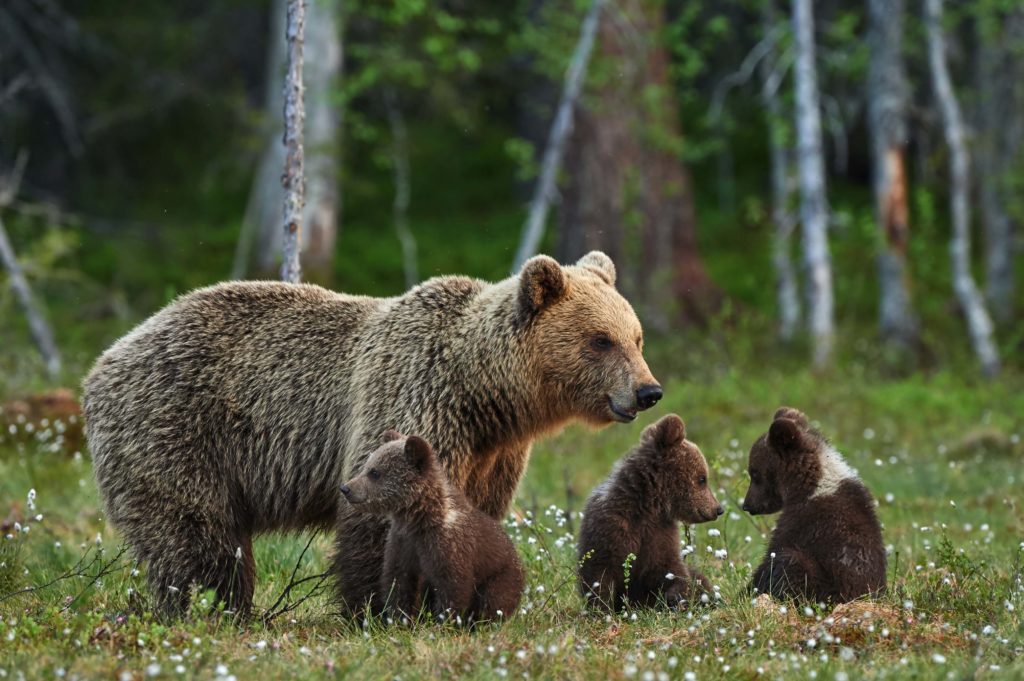
Reach Your Wildlife Photography Goals
What is your wildlife photography aspiration? Do you dream of shooting wildlife art photography that’s worthy of an exhibition in a museum in London, New York, or Paris? Or would you prefer to focus on wildlife shots that capture the spirit of your own backyard? Either way, our photography tips can help you achieve your goals.
You can start by studying and observing wildlife images online and in local art galleries. What are the differences between professional wildlife photographs for sale and amateur shots on Instagram? What make the photos in wildlife photography magazines so outstanding? One key difference is that experienced wildlife photographers always take the time to learn about their subject instead of just shooting blindly and hoping for the best.
Another way to learn is through taking photography workshops. These workshops can teach you the basics of wildlife photography equipment, lighting, composition, and more. When you’re ready to take your newfound skills outdoors, remember to be patient, relax, and enjoy the moment. Don’t stress about getting everything right on your first wildlife shoot. You’ll pick up a few tricks with practice. Remember you can always enhance your images during post-processing with professional-grade Lightroom presets.
Once you’ve mastered the fundamentals, you may want to take a wildlife photography tour. You can find tours for Colorado wildlife photography or Arkansas wildlife photography in the U.S., along with many exciting destinations around the world. You may experience the thrill of capturing a remarkable natural history image that earns a place in a wildlife photography book.
As a nature photographer who understands how to shoot great pictures of wildlife, your opportunities will be abundant. Professional photography of animals is always in high demand. You can try selling your best shots online or aim to have your work displayed in an art gallery or natural history museum. Let your love of the natural world and animals inspire you in new directions!
